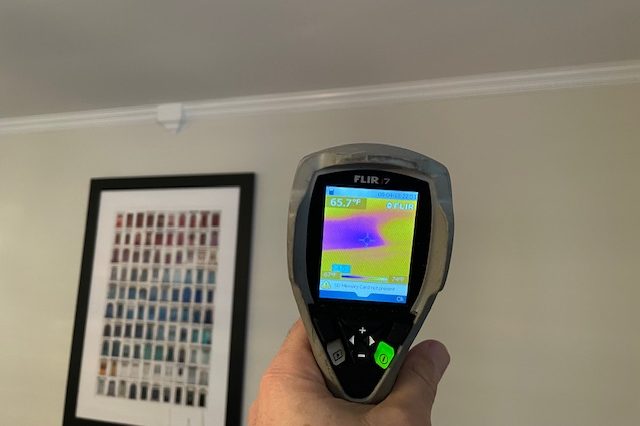Low Water Pressure in Your Home?
Low water p-ressure can make everyday tasks like showering, washing dishes, and doing laundry frustrating. If you’ve noticed weaker-than-usual water flow, it’s important to identify the cause and find the right solution. This guide explores common reasons for low water pressure and provides effective solutions to restore proper water flow in your home.
Common Causes of Low Water Pressure and How to Fix Them

1. Clogged Pipes
Over time, pipes can accumulate mineral deposits, rust, or debris, which reduce water flow. This is especially common in areas with hard water, where limescale buildup can gradually block pipes.
How to Fix It:
✔ Flush the pipes by turning off the water supply and running high-pressure water through them.
✔ Use a pipe descaler or cleaning solution designed to break down mineral buildup.
✔ If the blockage is severe, call a plumber to inspect and clean or replace the pipes.
2. Partially Closed Main Water Valve
If your home’s main shut-off valve is not fully open, it can restrict water pressure throughout the house.
How to Fix It:
✔ Locate the main water shut-off valve (usually near where the water line enters your home).
✔ Ensure the valve is fully open—for a wheel-style valve, turn it counterclockwise, and for a lever-style valve, ensure it’s parallel to the pipe.
3. Malfunctioning Pressure Regulator
A water pressure regulator controls the pressure coming into your home from the municipal supply. If it’s faulty, it may reduce or increase pressure unexpectedly.
How to Fix It:
✔ Use a pressure gauge (available at hardware stores) to test the water pressure at an outdoor faucet.
✔ If pressure is consistently low, replace the pressure regulator or hire a plumber to do it.
4. Leaky Pipes or Fixtures
Water leaks can cause a significant drop in pressure. Common signs include damp walls or ceilings, water stains, unexplained increases in water bills, or puddles near pipes.
How to Fix It:
✔ Check under sinks, around toilets, and in basements for visible leaks.
✔ Look for signs of mold growth or musty smells, which can indicate hidden leaks.
✔ If you suspect a hidden leak, contact a professional leak detection service for inspection and repairs.
5. Plumbing System Corrosion (Old Pipes)
If your home has older galvanized steel pipes, they may be corroding from the inside, restricting water flow.
How to Fix It:
✔ Inspect exposed pipes for rust, discoloration, or flaking.
✔ Consider replacing old pipes with copper or PEX piping, which last longer and maintain better water flow.
6. Sediment Buildup in the Water Heater (Hot Water Issues Only)
If your home has low hot water pressure, but cold water pressure is normal, the issue is likely in your water heater. Sediment buildup inside the heater can clog the lines and reduce pressure.
How to Fix It:
✔ Flush the water heater by draining and refilling it to remove sediment.
✔ Check the inlet valve—if it’s partially closed, open it fully.
✔ If problems persist, consider replacing an aging water heater.
7. Municipal Water Supply Issues
Sometimes, the problem isn’t inside your home—it’s caused by your city’s water supply. Issues such as water main breaks, maintenance work, or system-wide pressure reductions can affect your home’s water pressure.
How to Fix It:
✔ Ask neighbors if they are experiencing similar issues.
✔ Contact your local water provider to check for outages, repairs, or known pressure problems.
✔ If the issue is ongoing, consider installing a water pressure booster pump to improve flow.
8. Clogged Faucet Aerators and Showerheads
Over time, mineral deposits and debris can clog faucet aerators and showerheads, reducing water flow.
How to Fix It:
✔ Remove the aerator or showerhead and soak it in vinegar for an hour to dissolve buildup.
✔ Use a small brush or needle to clear any remaining debris.
✔ Replace old, corroded aerators and showerheads if necessary.
9. Water Pressure Issues in a Specific Fixture
If only one sink, shower, or faucet has low pressure while the rest of the house is fine, the issue is likely with that fixture’s plumbing.
How to Fix It:
✔ Check for clogs or buildup in the fixture’s pipes.
✔ Inspect the shut-off valve under the sink or behind the toilet to ensure it is fully open.
✔ If the issue persists, the fixture or pipes may need replacement.
 How to Increase Water Pressure in Your Home
How to Increase Water Pressure in Your Home
If you’ve checked for leaks, blockages, and municipal supply issues and still experience low water pressure, consider these long-term solutions:
✅ Install a Water Pressure Booster Pump – A booster pump increases water pressure from the main supply.
✅ Use a Water Softener – If hard water is causing mineral buildup, a softener can prevent future blockages.
✅ Upgrade Your Plumbing System – Replacing outdated pipes with modern materials improves water flow and prevents corrosion-related issues.
✅ Regular Maintenance – Routinely clean aerators, flush your water heater, and inspect for leaks to prevent pressure issues.
When to Call a Plumber
While some water pressure problems can be fixed with simple adjustments, more serious issues require professional help. Call a plumber if:
🔹 You suspect hidden leaks in walls, ceilings, or underground.
🔹 Your home has old pipes that may need replacing.
🔹 Your water heater is malfunctioning despite regular maintenance.
🔹 The issue persists despite checking common causes.
Final Thoughts
Low water pressure is a common issue, but diagnosing and fixing it can restore strong, steady water flow in your home. Start by checking for blockages, leaks, and valve issues, and consider long-term improvements like installing a pressure booster or upgrading your plumbing system.
If you’re unsure of the cause, consult a professional plumber to ensure a thorough and effective solution.
